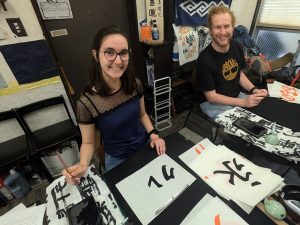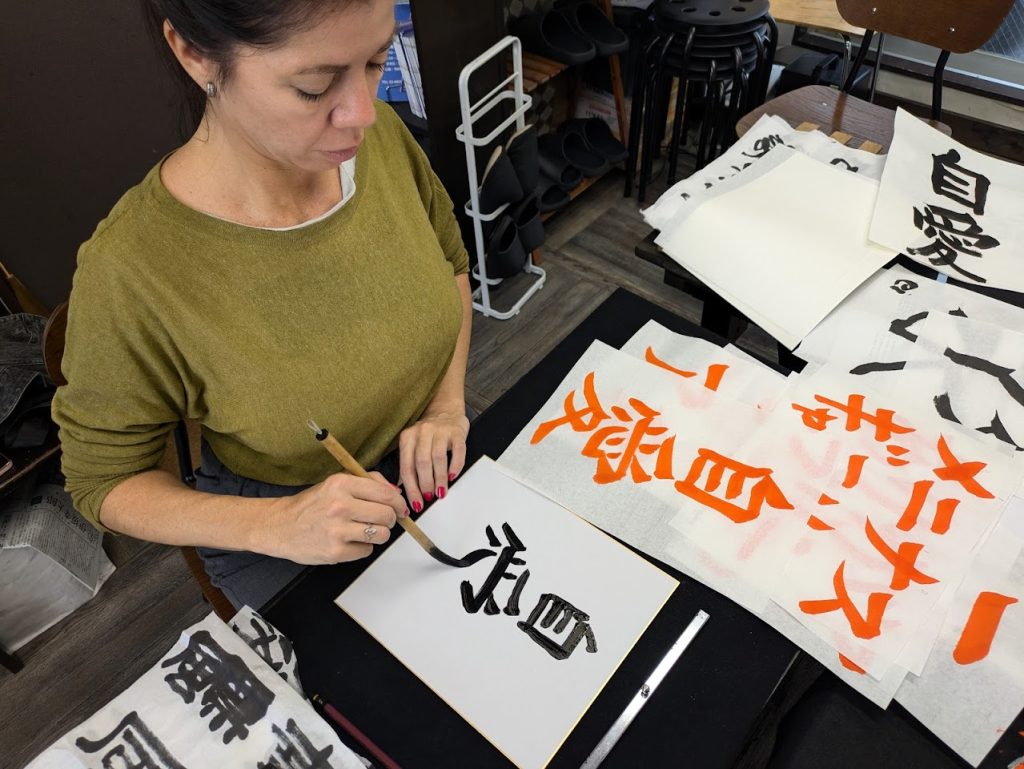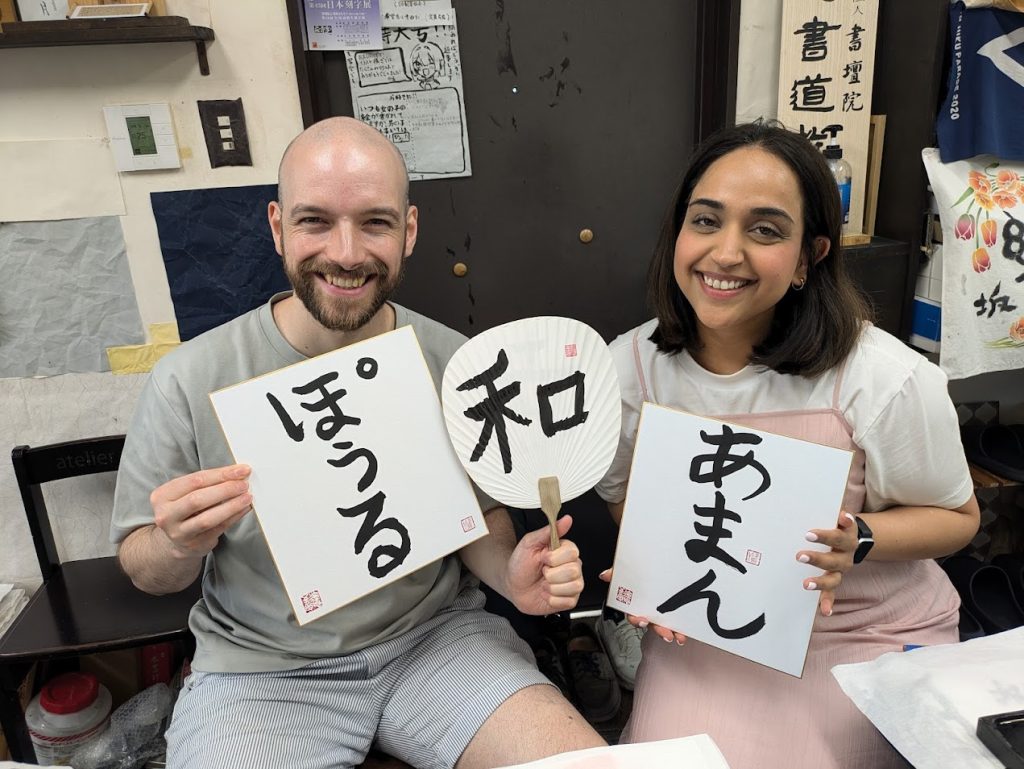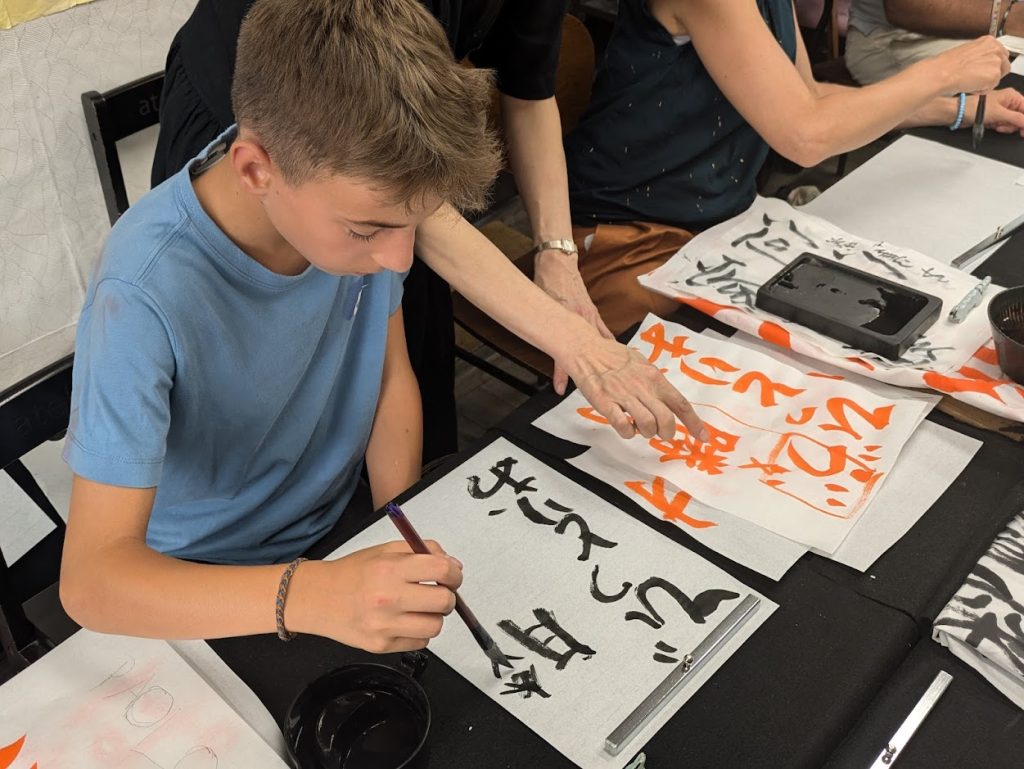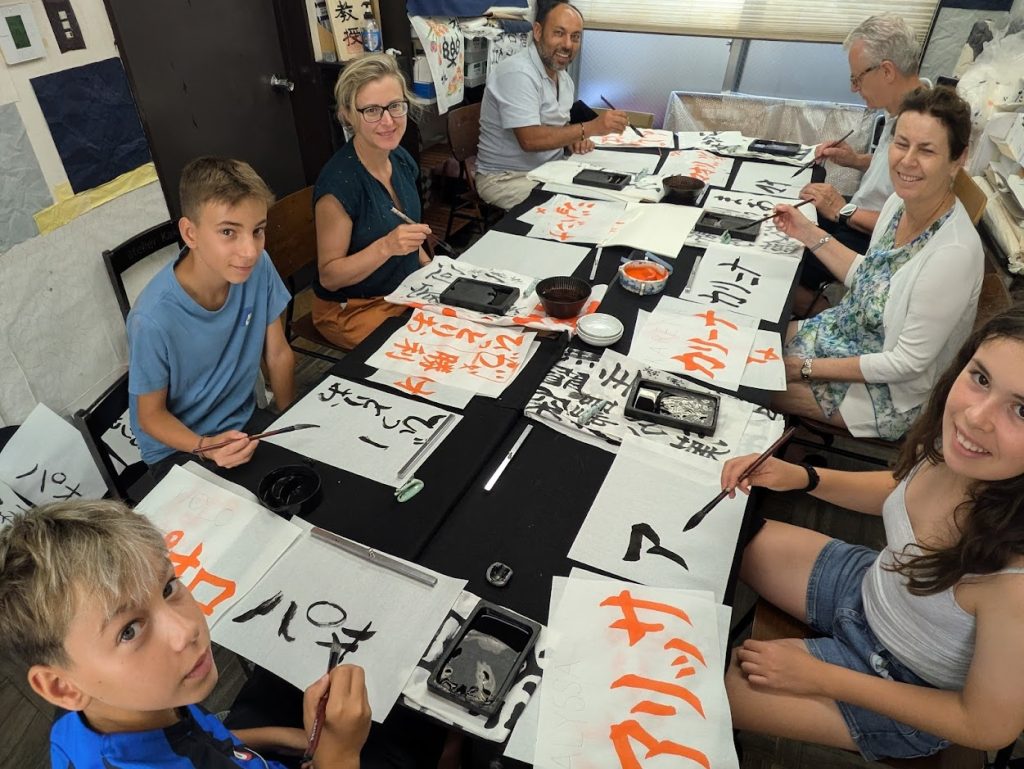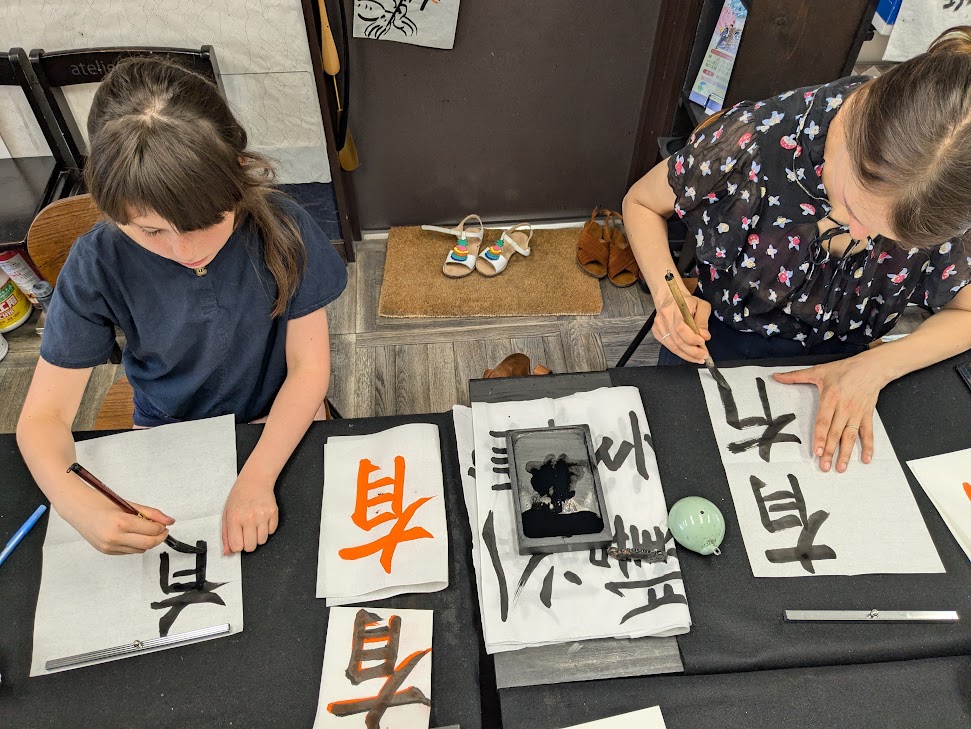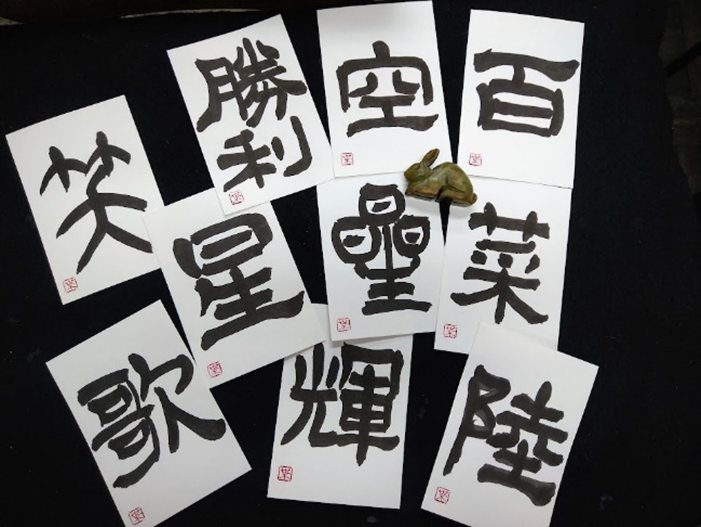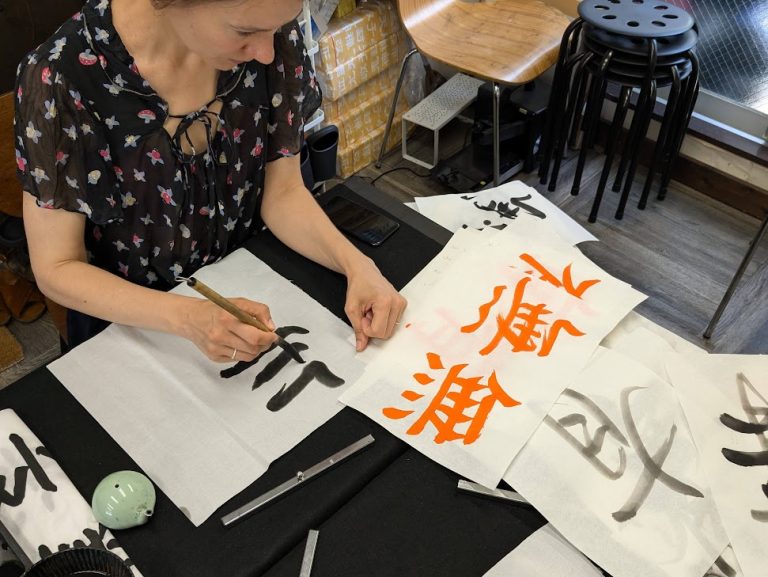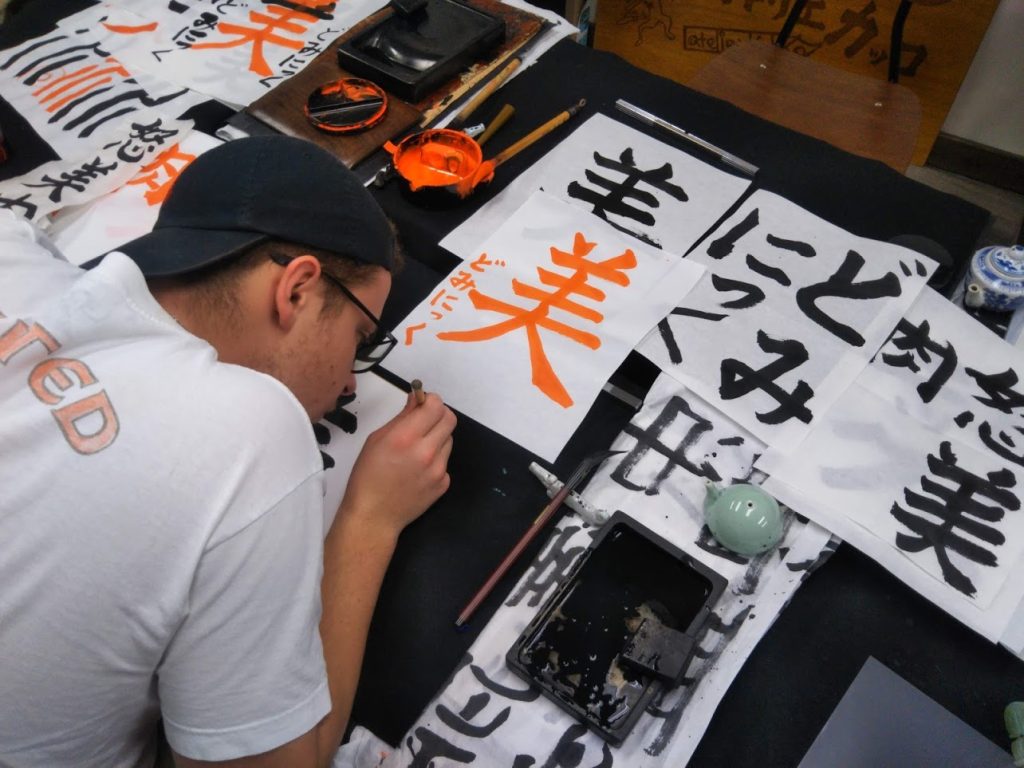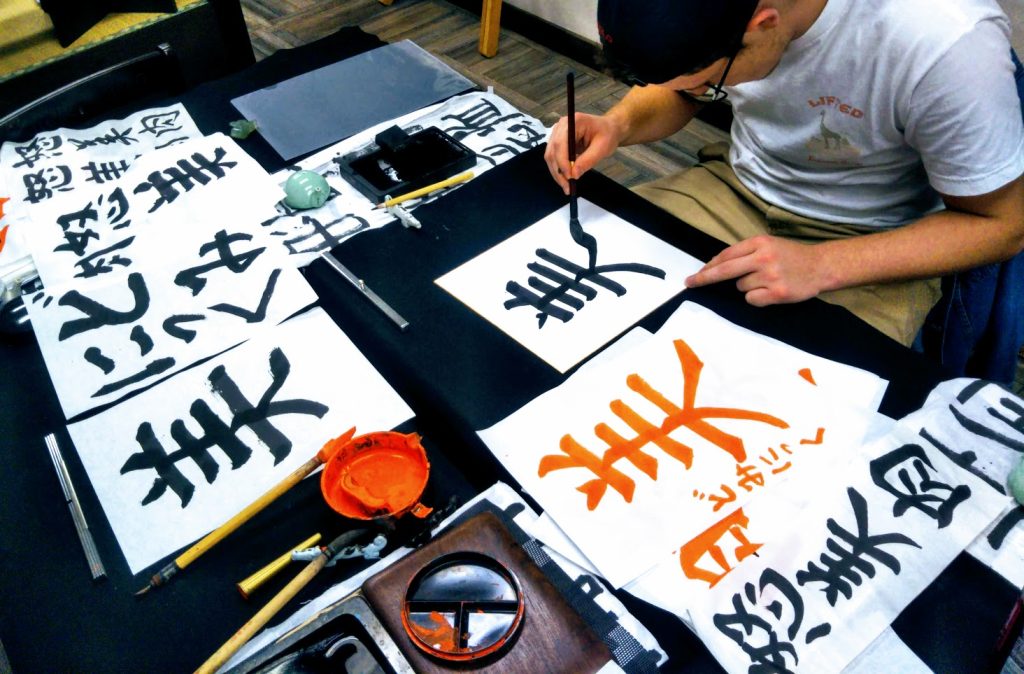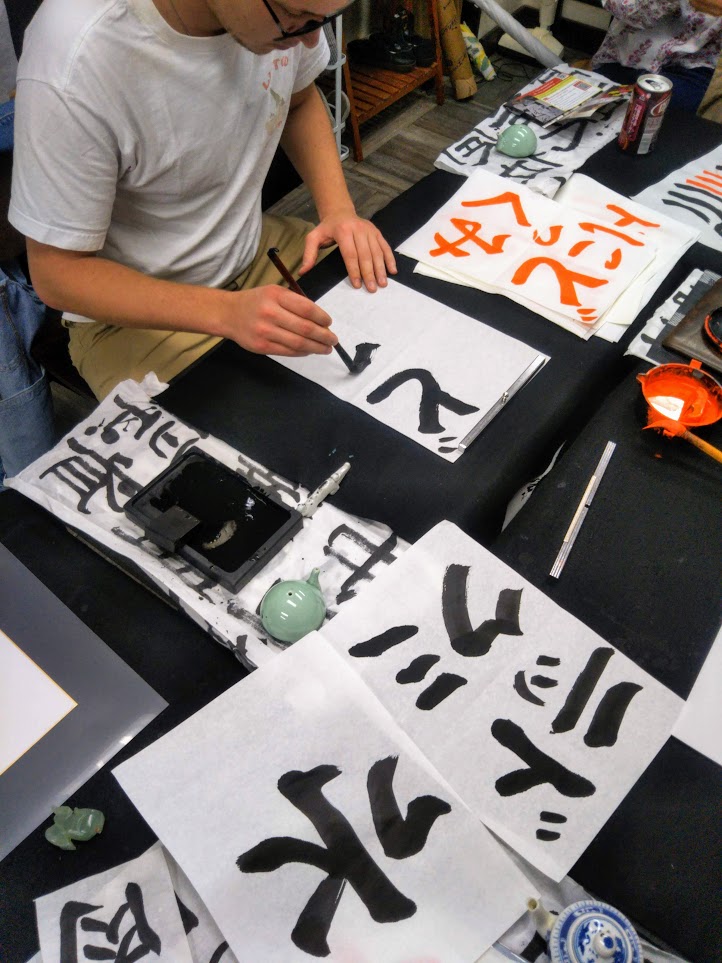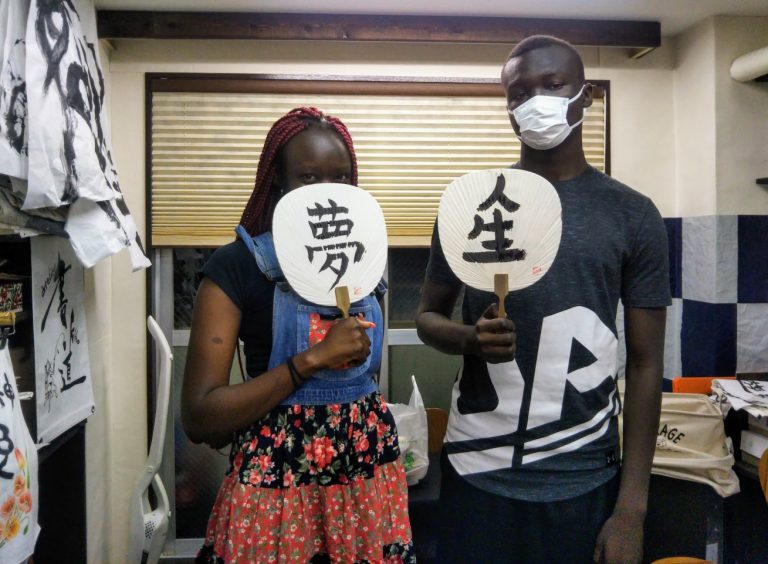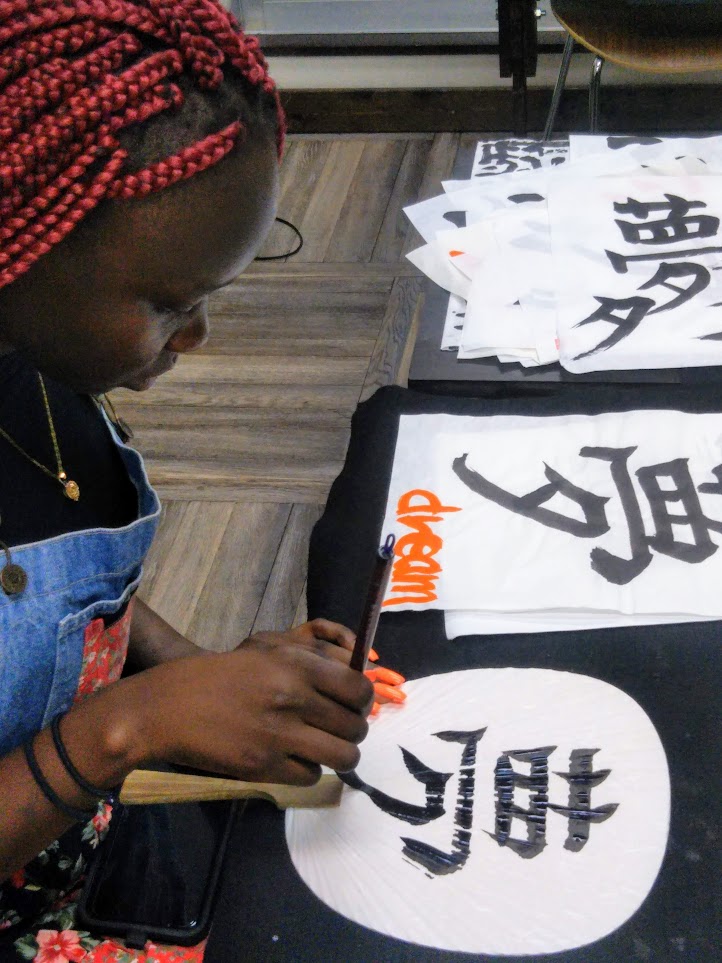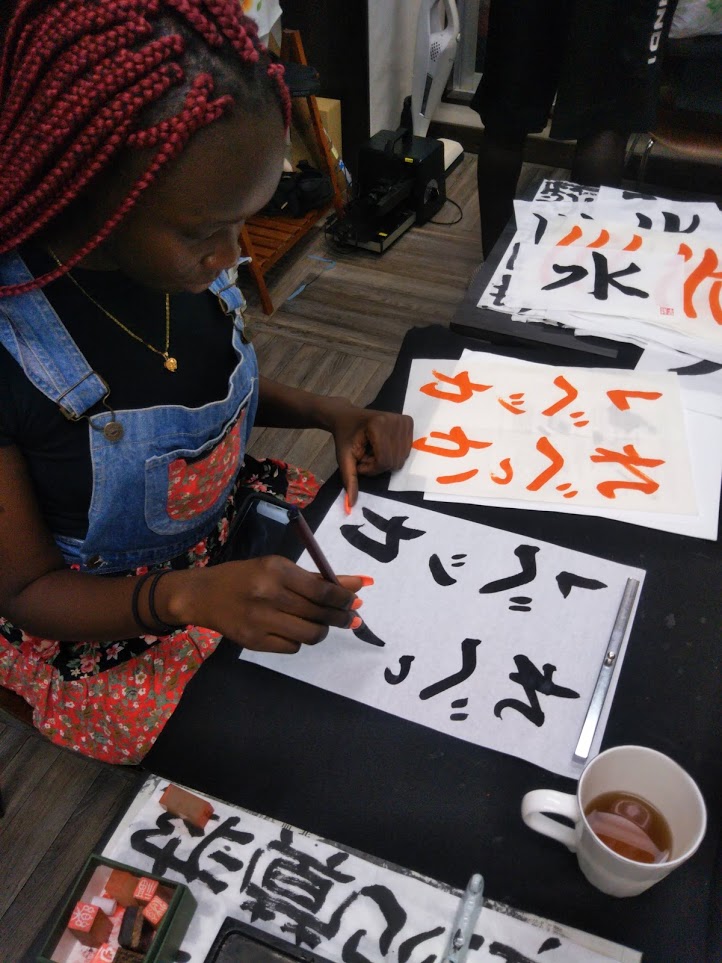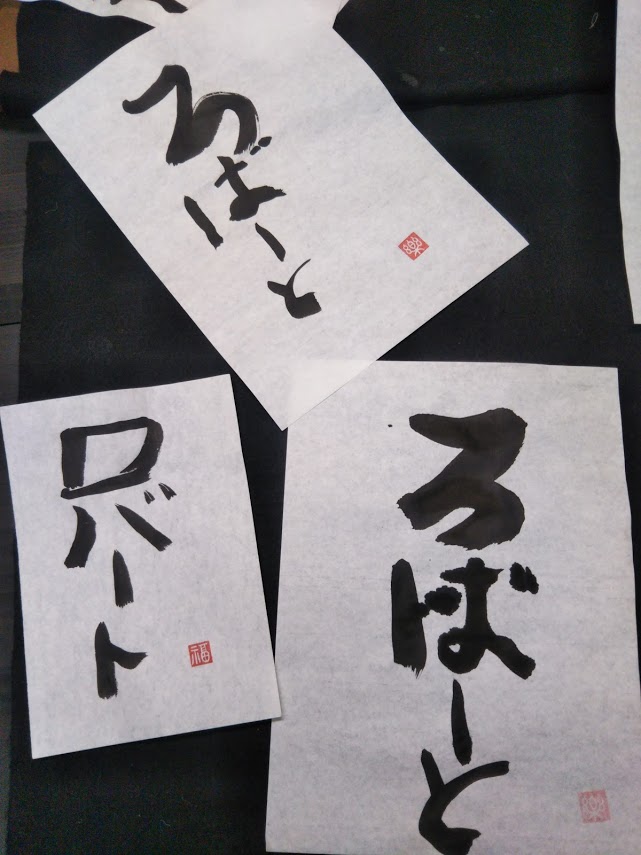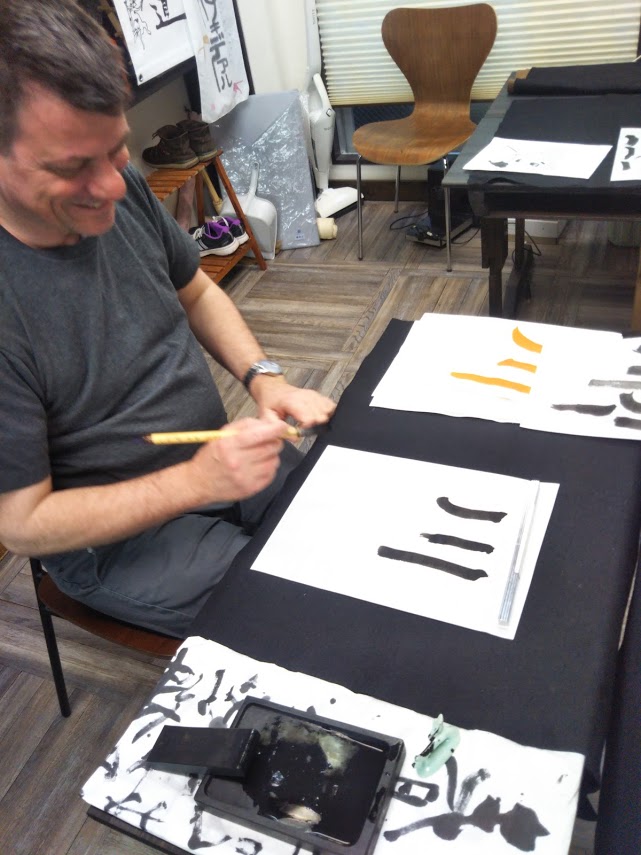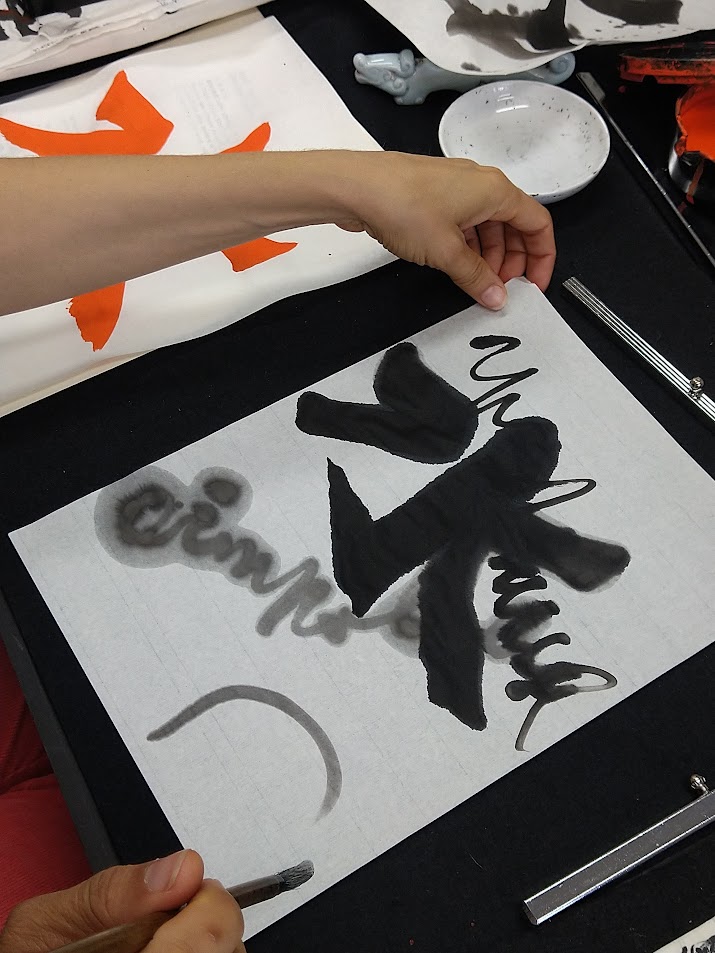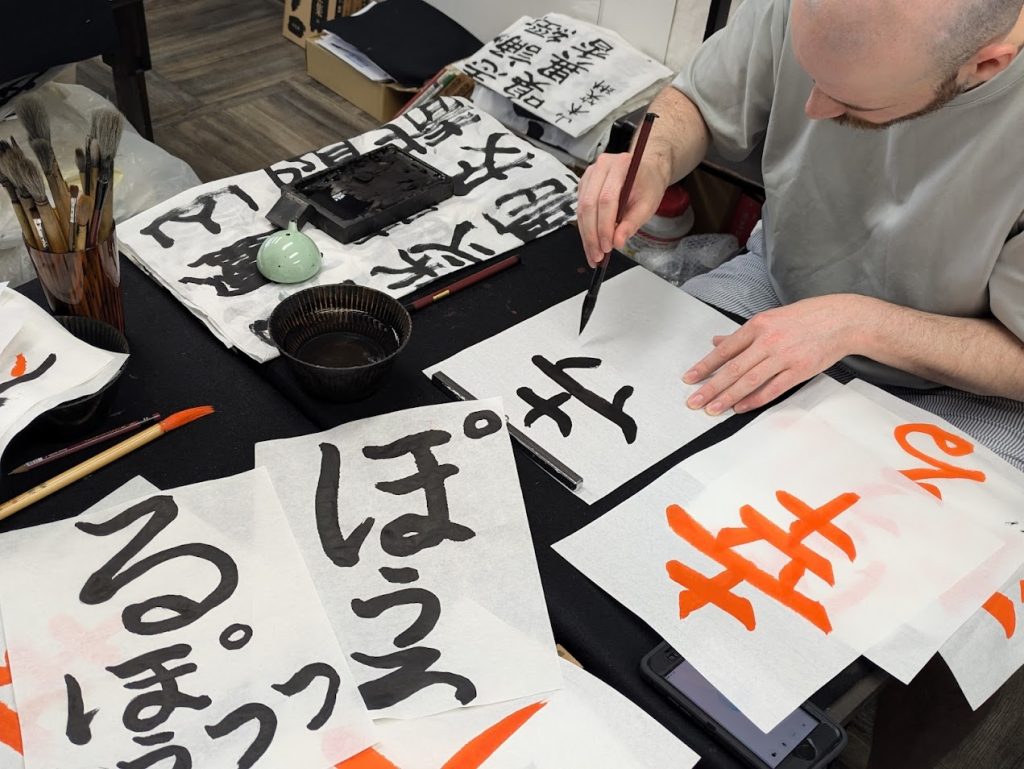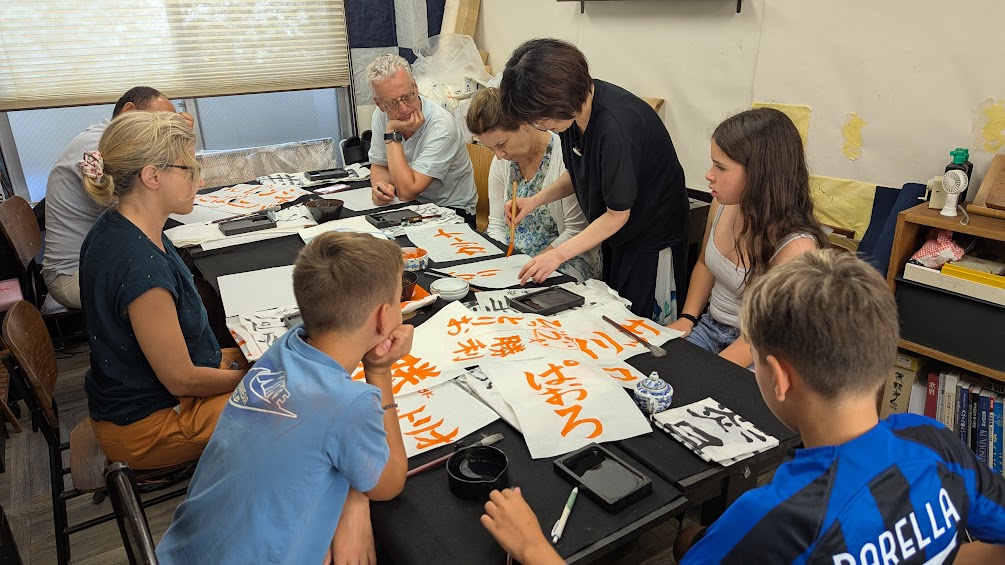書道(Calligraphy, Sho-do)
Tokyo Calligraphy Class
Would you like to take a peek into the world of Japanese characters through calligraphy? Calligraphy unifies the mind and is connected to Zen.
Complete your work in an hour’s lesson!
Since we will be using ink, please wear clothes that you don’t mind getting dirty.
(Things to be prepared in class)
・Calligraphy equipment set (ink, paper, brush)
・印 (Gain・Stamp)
・Colored paper or fan to take home as a souvenir
・You can take home the work you wrote in class.
You can experience authentic calligraphy without bringing anything.

STEP1
① Hold the brush vertically. Start by practicing drawing lines with good posture.

STEP2
②Practice Tome, Harai, and Hane

STEP3
③Use the results of your practice to try your hand at writing the kanji for “water”!

STEP4
④Look at the model and concentrate on writing. By practicing, you will gradually become better at writing.

STEP5
⑤Finally, try writing your own name. Japanese has three writing systems: hiragana, katakana, and kanji. Start by practicing katakana. Then hiragana. Finally, try kanji! Kanji is difficult, but you can learn to write it by practicing.

